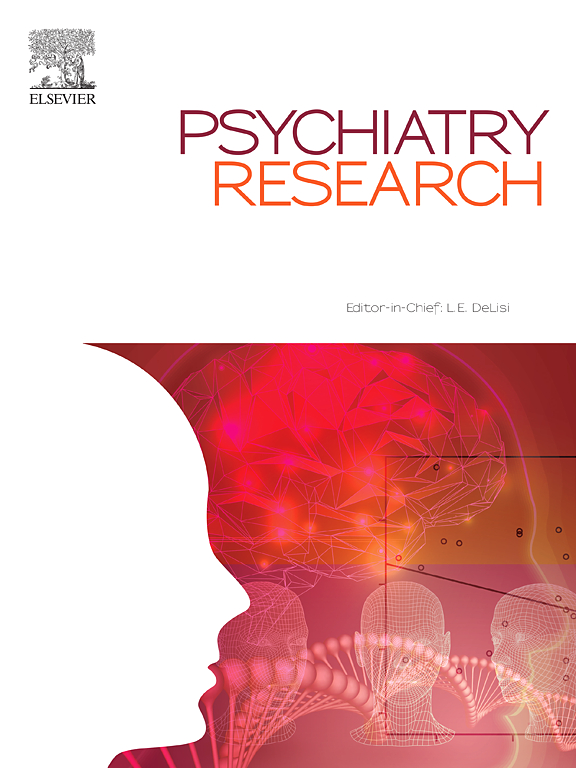Trends in adolescent violence victimization pre-, intra-, and post-COVID–19 pandemic in South Korea, 2012–2023: a nationwide cross-sectional study
IF 4.2
2区 医学
Q1 PSYCHIATRY
引用次数: 0
Abstract
Background
Adolescent violence victimization is a major public health concern, but research has been limited by short durations and small samples, restricting long-term understanding. This study examined its trends and vulnerabilities in South Korea, focusing on the impact of COVID-19 pandemic.
Methods
Data were collected from 740,687 nationally representative samples (7–12th grade adolescents) through the Korean Youth Risk Behavior Web-based Survey from 2012 to 2023. Violence victimization was defined as treatment at a hospital in the past 12 months due to physical, mental, or property victimization. To assess the impact of the COVID–19 pandemic, the data were categorized into pre-(2012–2019), intra-(2020–2022), and post-(2023) pandemic periods, and analyzed using weighted regression models.
Results
A total of 740,687 participants (379,021 boys [51.17 %]) were included in this analysis from 2012 to 2023. The overall prevalence of adolescent violence victimization significantly declined from 2.91 % [95 % CI, 2.77–3.04] to 1.94 % [1.86–2.02] in pre-pandemic, then decreased to 1.13 % [1.03–1.24] during the early intra-pandemic, before rising to 2.29 % [2.12–2.46] in the post-pandemic. Vulnerable subgroups included students in 7–9th grades, those with depressive symptoms, attendees of all-boys schools, residents of facilities, current substance users, all exhibiting greater susceptibility to violence victimization.
Conclusion
This study identified a U-shaped trend in adolescent violence victimization in South Korea throughout the pandemic. Relative risk was associated with school and living environments, psychosocial factors, and substance use. Findings highlight the need for a systemic approach to interventions, addressing both individual vulnerabilities and structural factors to strengthen prevention.
背景青少年暴力受害是一个主要的公共卫生问题,但由于研究时间短、样本少,限制了对这一问题的长期了解。本研究以 COVID-19 大流行的影响为重点,研究了韩国青少年暴力受害的趋势和脆弱性。方法从 2012 年到 2023 年,通过韩国青少年危险行为网络调查收集了 740,687 个具有全国代表性的样本(7-12 年级青少年)。暴力受害定义为过去12个月中因身体、精神或财产受害而在医院接受治疗。为评估 COVID-19 大流行的影响,将数据分为大流行前(2012-2019 年)、大流行中(2020-2022 年)和大流行后(2023 年)三个时期,并使用加权回归模型进行分析。青少年遭受暴力侵害的总体发生率从大流行前的 2.91 % [95 % CI, 2.77-3.04] 显著下降到 1.94 % [1.86-2.02],然后在大流行初期下降到 1.13 % [1.03-1.24],在大流行后又上升到 2.29 % [2.12-2.46]。易受影响的亚群包括 7-9 年级的学生、有抑郁症状的人、男子学校的学生、设施内的居民、目前的药物使用者,他们都更容易成为暴力受害者。相对风险与学校和生活环境、社会心理因素和药物使用有关。研究结果突出表明,有必要采取系统的干预方法,从个人脆弱性和结构性因素两方面入手,加强预防工作。
本文章由计算机程序翻译,如有差异,请以英文原文为准。
求助全文
约1分钟内获得全文
求助全文
来源期刊

Psychiatry Research
医学-精神病学
CiteScore
17.40
自引率
1.80%
发文量
527
审稿时长
57 days
期刊介绍:
Psychiatry Research offers swift publication of comprehensive research reports and reviews within the field of psychiatry.
The scope of the journal encompasses:
Biochemical, physiological, neuroanatomic, genetic, neurocognitive, and psychosocial determinants of psychiatric disorders.
Diagnostic assessments of psychiatric disorders.
Evaluations that pursue hypotheses about the cause or causes of psychiatric diseases.
Evaluations of pharmacologic and non-pharmacologic psychiatric treatments.
Basic neuroscience studies related to animal or neurochemical models for psychiatric disorders.
Methodological advances, such as instrumentation, clinical scales, and assays directly applicable to psychiatric research.
 求助内容:
求助内容: 应助结果提醒方式:
应助结果提醒方式:


